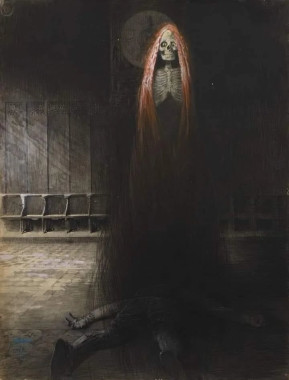Two Lovers- Reza Abbasi, Persian miniature painting on paper (1630) ( lemmy.world )



The original page 13 of the Codex Borbonicus, showing the 13th trecena of the Aztec sacred calendar. This 13th trecena was under the auspices of the goddess Tlazolteotl, who is shown on the upper left wearing a flayed skin, giving birth to Cinteotl. The 13 day-signs of this trecena, starting with 1 Earthquake, 2 Flint/Knife, 3...




Le Roman de la Rose (The Romance of the Rose) is a medieval poem written in Old French and presented as an allegorical dream vision. As poetry, The Romance of the Rose is a notable instance of courtly literature, purporting to provide a "mirror of love" in which the whole art of romantic love is disclosed. Its two authors...




Lear's illustrations were produced using lithography, in which artists copied their paintings onto a fine-textured limestone slab using a special waxy crayon. The block was then treated with nitric acid and gum arabic to etch away the parts of the stone not protected by the wax. The etched surface was wetted before adding an...

Honoré-Victorin Daumier was a French painter, sculptor, and printmaker, whose many works offer commentary on the social and political life in France, from the Revolution of 1830 to the fall of the second Napoleonic Empire in 1870. He earned a living producing caricatures and cartoons in newspapers and periodicals such as La...



Apologies for the slightly skewed picture. I actually own this artwork. A close family friend has been collecting 19th Century Japanese woodcuts his entire life, and he gifted this one of a wedding scene to my wife and I when we got married....






A very early depiction of the Buddha.




